WAEC 2025 GCE Mathematics Expo/Runs (Obj/Essay) Questions and answers – If you’re preparing for the 2025 WAEC GCE Mathematics (Objective & Essay) solution exams, this article provides all the information you need. You’ll find the WAEC GCE Nov/Dec Mathematics (Objective & Essay) questions and answers for 2025, along with tips and exam details to help you succeed.
We offer valuable insights for the 2025 WAEC GCE Mathematics Questions and answers expo/ runs, making it easy to understand the format and key areas to focus on. Whether you’re looking for the 2025 WAEC GCE Mathematics questions and answers for the November/December exams or want to learn more about the exam format, this guide is designed to help you prepare effectively
WAEC GCE Mathematics Expo/Runs Questions and Answers 2025
You can also download and get free 2025 WAEC GCE Mathematics (Objective & Essay) Questions /answers as a PDF for offline study. We’ve gathered helpful resources to assist you in understanding the questions and improving your preparation. Use this guide to enhance your study and perform at your best in the exam.
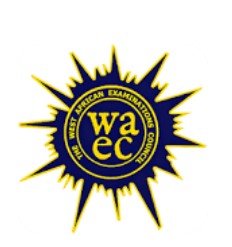
Important Dates:
The General Mathematics (Core) Paper II & I (Essay & Objective) exams are scheduled for Saturday, 22nd November 2025, from Essay: 08:30 – 11:00 (2 hrs 30 mins) Objective: 13:00 – 14:30 (1 hr 30 mins).
The exact timing will be confirmed by the West African Examinations Council (WAEC)
Verified 2025 WAEC Mathematics Questions paper!
📘 Join Our WAEC Exam Room
Get live updates, likely questions, and connect with other students preparing for WAEC Mathematics GCE and other subjects.
WAEC GCE Mathematics (Objective & Essay) Questions and Answers 2025
The resources provided below for Mathematics (Objective & Essay) will help you prepare effectively for the upcoming exams. These study materials are designed to guide students toward success in the WAEC GCE.
At Iyierioba.com, we have carefully reviewed past exam performances to provide useful insights, tips, and strategies. By going through these resources, you will:
- Understand common challenges faced by candidates.
- Learn practical strategies to improve your answers.
- Gain confidence in approaching both objective and essay sections.
Using these tools will boost your comprehension, sharpen your preparation, and increase your chances of scoring high in the final exams.
=====================================
2025 WAEC GCE Mathematics (ESSAY) Theory Answers | 22nd Nov
====================================
[ANSWERS LOADING =========================]
WAEC GCE General Mathematics Past Question and Answers
General Mathematics Paper 2, WASSCE (SC), 2023:
- (a) A car travels 112 km at an average speed of 70 km/h. It then continues for 60 km at an average speed of 50 km/h. Calculate the total time taken for the entire journey.
- (b) If x = 2 and y = 3, evaluate the given algebraic expression after substituting the values.
Solution
(a) Journey time calculation
Formula: Time = Distance ÷ Speed
- First journey: 112 ÷ 70 = 1.6 hours
- Second journey: 60 ÷ 50 = 1.2 hours
- Total time: 1.6 + 1.2 = 2.8 hours
0.8 hour = 0.8 × 60 minutes = 48 minutes.
Final Answer: 2 hours 48 minutes
(b) Algebraic evaluation
Simplify the expression algebraically where possible, then substitute x = 2 and y = 3. Carry out the arithmetic carefully to arrive at the final simplified result.
Observation (Examiner’s Report)
| Part | Candidate Performance | Challenge Noted |
|---|---|---|
| (a) Distance–Speed–Time | Fair | Some candidates could set up the relation but failed to add up the two time values correctly. |
| (b) Algebraic Substitution | Good | Most candidates substituted values of x and y correctly and simplified to the correct result. |
Key Exam Tips
- Always compute each time segment separately before summing.
- Convert decimal parts of hours into minutes to give clear answers.
- Simplify algebraic expressions first to reduce substitution errors.
- Always present answers with correct units (hours, minutes, etc.).
General Mathematics Paper 2, WASSCE (SC), 2023:
Question 2
- In a football match, tickets for children and adults were sold at D 3.00 and D 5.00 respectively. If 400 people attended the match and D 1,700.00 was collected in ticket sales:
- (a) How many tickets were sold to adults?
- (b) Mr. Sonko sold 250 tickets. If 175 of these were for adults, how much did he make in total sales?
Solution
(a) Tickets sold to adults
Let the number of children’s tickets = x and adults’ tickets = y.
- Total tickets: x + y = 400 … (1)
- Total sales: 3x + 5y = 1700 … (2)
From equation (1): x = 400 – y
Substitute into (2): 3(400 – y) + 5y = 1700
Simplify: 1200 – 3y + 5y = 1700 → 2y = 500 → y = 250.
Answer: 250 adult tickets were sold.
(b) Mr. Sonko’s ticket sales
- Total tickets sold = 250
- Adult tickets = 175
- Children’s tickets = 250 – 175 = 75
Sales value = (3 × 75) + (5 × 175)
= 225 + 875 = D 1,100.00
Answer: Mr. Sonko made D 1,100.00 in sales.
Observation (Examiner’s Report)
| Part | Candidate Performance | Challenge Noted |
|---|---|---|
| (a) Tickets Calculation | Very Good | A few candidates omitted the currency unit in their final answer. |
| (b) Sales by Mr. Sonko | Satisfactory | Some candidates failed to state the final amount in two decimal places. |
Key Exam Tips
- Translate word problems into simultaneous equations before solving.
- Always label answers with correct units (e.g., D for Dalasi).
- Check decimal places in financial calculations.
- Show working clearly to secure method marks.
General Mathematics Paper 2, WASSCE (SC), 2023:
Question 3
In the diagram, PQR is an equilateral triangle with side 18 cm.
M is the midpoint of QR. An arc of a circle with centre P touches QR at M and meets PQ at A and PR at B.
Calculate, correct to two decimal places, the area of the shaded region.
[Take π = 3.142]
Solution
- Construct the perpendicular: Drop a perpendicular line from P to QR. Since M is the midpoint of QR, PM bisects QR, making triangle PMQ a right-angled triangle.
- Apply Pythagoras theorem:\( PM^2 + (9)^2 = (18)^2 \)\( PM^2 + 81 = 324 \)\( PM^2 = 243 \)\( PM = 9\sqrt{3} \, cm \)
- Area of sector PAMB:Radius = \( 9\sqrt{3} \). Angle at P = 60° (since PQR is equilateral).\( \text{Sector area} = \dfrac{60}{360} \times \pi r^2 \)= \( \dfrac{1}{6} \times 3.142 \times (9\sqrt{3})^2 \)= 127.29 cm² (approx).
- Area of triangle PQR:Area of equilateral triangle = \( \dfrac{\sqrt{3}}{4} \times (side)^2 \)= \( \dfrac{\sqrt{3}}{4} \times (18^2) \)= 140.30 cm² (approx).
- Area of shaded region:= Area of triangle – Area of sector= 140.30 – 127.29= 13.01 cm²
Final Answer
The area of the shaded region = 13.01 cm².
Observation (Examiner’s Report)
| Aspect | Candidate Performance | Comment |
|---|---|---|
| Popularity of Question | Low | Few candidates attempted it. |
| Understanding of Geometry | Weak | Most candidates could not link the shaded region to a triangle and a sector. |
| Expected Approach | Clear | Use Pythagoras theorem to find radius, calculate area of sector and equilateral triangle, then subtract. |
Exam Tips
- Always identify the geometric shapes within a diagram (triangles, sectors, etc.).
- For equilateral triangles, remember all angles = 60°.
- Apply Pythagoras theorem for perpendicular bisectors in geometry questions.
- Present answers to two decimal places when required.
General Mathematics Paper 2, WASSCE (SC), 2023: Question 4
Question
In the diagram, P, Q, R, and S are points on a circle with centre K.
KR is a bisector of ∠SRQ. Given that ∠SRQ = 41° and ∠SKR = 80°, find:
- ∠RQP
- ∠SPQ
(Diagram not drawn to scale)
Solution
- Step 1: Identify triangle KRS
Since KR is the bisector of ∠SRQ, triangle KRS is isosceles with base angles ∠KRS = ∠KSR.
In triangle KRS:∠KRS + ∠KSR + ∠SKR = 180°2∠KSR + 80° = 180°2∠KSR = 100°∠KSR = 50° - Step 2: Find ∠RQP
In cyclic quadrilateral RQPS:∠RQP + (∠KSR + ∠SRQ) = 180°∠RQP + (50° + 41°) = 180°∠RQP + 91° = 180°∠RQP = 89° - Step 3: Find ∠SPQ
Since ∠SRQ = 2∠KRS = 2 × 50° = 100°
In cyclic quadrilateral SRQP:∠SRQ + ∠SPQ = 180°100° + ∠SPQ = 180°∠SPQ = 80°
Final Answers
- ∠RQP = 89°
- ∠SPQ = 80°
Observation (Examiner’s Report)
| Aspect | Candidate Performance | Comment |
|---|---|---|
| Popularity | Moderate | Many candidates attempted this question. |
| Diagram Interpretation | Weak | Several candidates could not interpret the circle diagram correctly. |
| Application of Circle Theorem | Fair | Some applied wrong circle properties instead of using cyclic quadrilateral rules. |
| Expected Approach | Clear | Identify isosceles triangle KRS, apply angle sum in a triangle, and use cyclic quadrilateral opposite angles. |
Exam Tips
- Remember that opposite angles in a cyclic quadrilateral add up to 180°.
- In an isosceles triangle, base angles are equal.
- Always check if angle bisectors divide triangles symmetrically.
- Carefully label diagrams for clarity before solving circle geometry questions.
General Mathematics Paper 2, WASSCE (SC), 2023: Question 5
Question 5
A boy stands at a point M on the same horizontal level as the foot T of a vertical building.
He observes an object at the top P of the building at an angle of elevation of 66°.
He then moves directly backwards to a new point C and observes the same object at an angle of elevation of
53°. If MT = 50 m, find:
- (a) An illustration of the information in a diagram
- (b) (i) The height of the building
- (b) (ii) The distance MC
Expected Diagram
Candidates were expected to sketch the diagram below:
(Diagram representation)
P
|
|\
| \
66°\ \
M--T
\
\
53°\
C
MT = 50 m
Solution
(b)(i) Height of the Building (PT)
At point M, applying trigonometric ratio:
tan 66° = PT / MT
PT = 50 × tan 66°
PT = 112.3 m (approx.)
(b)(ii) Distance MC
At point C, applying trigonometric ratio:
tan 53° = PT / (MC + MT)
tan 53° = 112.3 / (x + 50)
Cross-multiplying:
1.327(x + 50) = 112.3
1.327x + 66.35 = 112.3
1.327x = 45.95
x = 34.6 m (approx.)
Therefore, MC = 34.6 m
Observation
| Aspect | Chief Examiner’s Comment |
|---|---|
| Diagram | Many candidates could not draw the required diagram correctly, which affected their scores. |
| Part (i) | They were expected to apply tan 66° to calculate the height of the building as 112.3 m. |
| Part (ii) | They were expected to apply tan 53° to find MC = 34.6 m. |
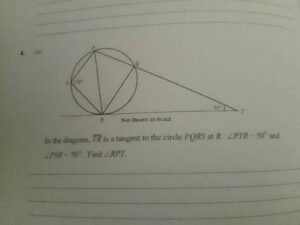
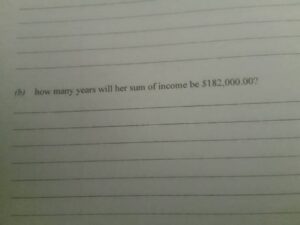
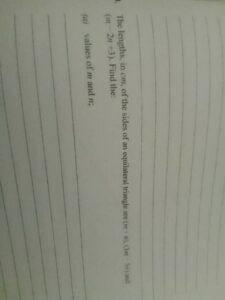
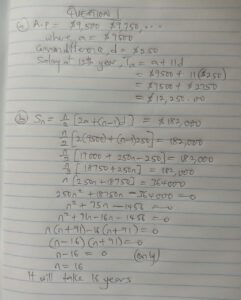
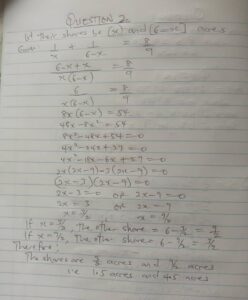
Can I Take CBT for WAEC GCE First Series?
Question: Does WAEC GCE First Series use CBT?
Answer:
No. The WAEC GCE First Series does not use Computer-Based Testing (CBT). It is conducted using the traditional paper-and-pen method.
Here’s what that means:
Candidates shade their multiple-choice answers on an OMR sheet.
They write detailed responses to essay/theory questions in answer booklets.
All questions are answered using the official question paper and provided materials.
While online CBT tools are useful for practice, the actual WAEC GCE exam is not computer-based.
How to Prepare for WAEC GCE Mathematics (First Series)
Many candidates struggle with Mathematics in WAEC. Below are practical and easy-to-follow tips that will help you succeed:
1. Get the WAEC Mathematics Syllabus
The syllabus is your guide.
Key areas include Algebra, Arithmetic, Geometry, Trigonometry, Statistics, and Probability.
2. Practice Past Questions
Solve previous WAEC GCE Mathematics papers.
Work on both Objective (OBJ) and Essay sections.
This helps you understand the pattern of questions.
3. Use Standard Mathematics Textbooks
Recommended: Mathematics for Senior Secondary Schools or similar trusted books.
Focus on formulas, worked examples, and exercises.
4. Watch Educational Tutorials
For tough topics like Trigonometry or Calculus, watch online tutorials on YouTube or other platforms.
Visual learning helps with difficult concepts.
5. Practice Regularly
Mathematics requires constant practice.
Dedicate time daily to solve problems step by step.
6. Use Online Practice Apps
Apps like Mathway and Photomath can help you practice solving equations.
They also provide step-by-step explanations.
7. Manage Your Time Effectively
During practice, set a timer.
Learn how to answer questions within the exam time limit.
8. Join Study Groups
Study with friends or classmates.
Share ideas, explain concepts to each other, and ask questions when confused.
Final Note
Even though the WAEC GCE First Series is not CBT, using online practice tools can still sharpen your skills. Focus on syllabus topics, past questions, time management, and consistent practice. With proper preparation, you can excel in the exam.
Recommended Posts:
➤ 2025 WAEC GCE Government 2nd Series (Essay & OBJ) Questions and Answers
➤ 2025 WAEC GCE Basic Electronics 2nd Series Essay & OBJ Answers
➤ 2025 WAEC GCE Financial Accounting 2nd Series Essay & OBJ Questions and Answers
➤ 2025 WAEC GCE CRS/IRS Essay & OBJ Questions and Answers
➤ 2025 WAEC GCE Biology OBJ/Essay Questions and Answers
Disclaimer: We do not support exam malpractice. We only provide study materials to help you prepare and pass your WAEC GCE exams.


